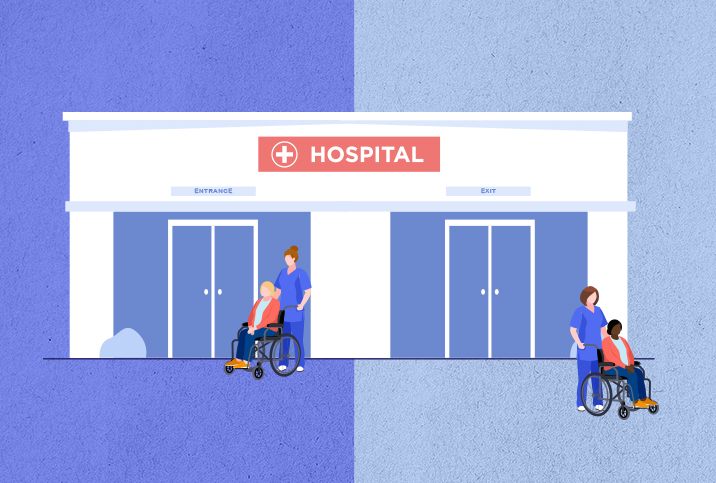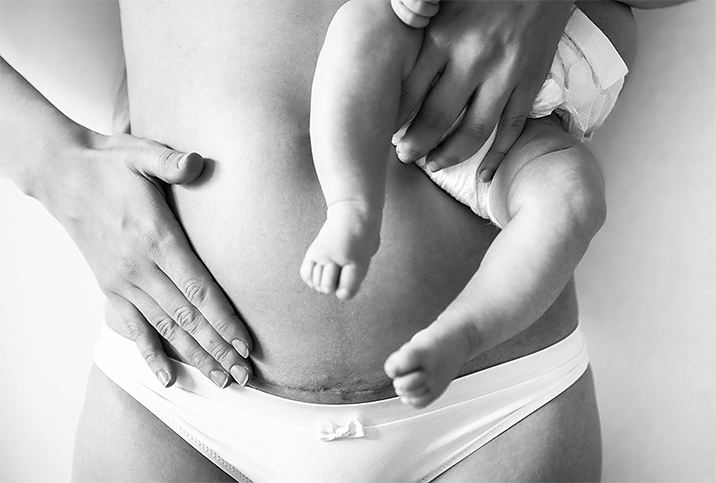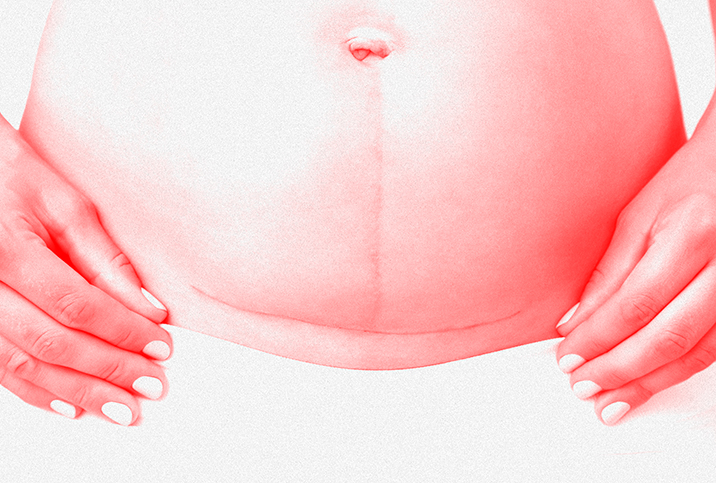Vulnerable Patients More Likely to Be Discharged Early After C-Section

Patients who are "socially vulnerable"—defined as Black or Hispanic, publicly insured or non-English-speaking—are more likely to have been discharged from the hospital early following a C-section both before and during the COVID-19 pandemic, according to researchers from Brigham and Women's Hospital in Boston and Amherst College.
This research was presented at the 2022 annual conference of the American College of Obstetricians and Gynecologists (ACOG). The study included nearly 1,900 cesarean deliveries between Jan. 1 and June 30, 2020: 694 before the start of the pandemic in March and 1,171 during the pandemic.
Early discharge was defined as a hospital stay of four days (96 hours) or fewer. Researchers found median stays of 95 hours before the pandemic and 76 hours during the pandemic. ACOG lists the typical hospital stay following a C-section as between 48 and 96 hours. The study found that of the eligible deliveries, 54 percent had early discharges pre-pandemic compared with 71 percent afterward.
"Socially vulnerable patients were more likely to leave the hospital earlier than their counterparts both before and during the COVID-19 pandemic. Our findings suggest that increased early discharges fall disproportionately on socially vulnerable patients," the researchers concluded.
"Most interestingly, we found that race alone was not a predictor of early discharge, however, being socially vulnerable was," said Ayodele Lewis, a research assistant at Brigham and Women's Hospital and one of the study's co-authors. "This shows that one racial group over another is not predisposed to early discharge, but those impacted by their sociopolitical marginalization are."
Predictors of early discharge included payer type (commercial, private or government/public), English-speaking ability and multiparity, or whether the mother had given birth two or more times, Lewis said.
Rather than looking at just race or single factors in isolation, the study was designed to take an intersectional approach.
"Socially vulnerable goes beyond racial disparities, recognizing that patients may be marginalized in more than one way," Lewis said. "By looking at variables of vulnerability together instead of separately, we get a clearer picture of how the most vulnerable in our community are affected."
C-section rates are rising
Rates of cesarean births have risen in all parts of the world since 1990 and now account for more than 1 in 5 deliveries worldwide, according to the World Health Organization (WHO). The WHO considers 10 percent to 15 percent an ideal rate for global cesarean births. The number of C-sections is expected to increase to 28.5 percent by 2030, according to projections in a 2021 British Medical Journal study.
The United States is working to lower its number of C-sections. As part of its Healthy People 2030 initiative, the Department of Health and Human Services has set a goal of reducing cesarean births among low-risk pregnant people with no prior births—known as nulliparous, term, singleton, vertex (NTSV) births—to 23.6 percent. "Low risk" is defined as a single, full-term baby (at least 37 weeks gestation) in the head-down position.
In 2020, 31.8 percent of all U.S. births were C-sections, according to the Centers for Disease Control and Prevention (CDC). The rate of NTSV C-sections was 25.9 percent. Although this percentage is higher than the initiative's target, it's still lower than the peak rate in 2009 when 28.1 percent of NTSV births were cesarean.
What early discharge means for mothers and babies
Early discharge from the hospital following a C-section isn't necessarily negative, but the outcome largely depends on the patient and their support system, said Amy Roskin, M.D., a board-certified OB-GYN and chief medical officer at Seven Starling, a maternal-health digital platform with headquarters in New York City.
"Early discharge can be appropriate in some circumstances if a patient prefers this and both the birthing parent and the newborn are healthy and can leave the hospital from a medical viewpoint," Roskin said. "Some new parents are fortunate to have family and social support in place that can provide assistance, so they may not need the support the hospital is providing. However, without this support, there may be additional stress on the parent and baby."
What the study did not establish was the "why"—the driving factors behind the early discharges. Lewis said more research is needed to explore this aspect and also to understand any short- and long-term postpartum health effects a shorter hospital stay may have on both mother and child, particularly in regard to infant and maternal mortality.
In the U.S., the rate of maternal mortality is about two times higher for Indigenous women and nearly three times higher for non-Hispanic Black mothers than for white women. Rates for non-Hispanic Black women were also significantly higher than rates for Hispanic women. The CDC found the most common causes of maternal mortality, tracked up to one year following childbirth, are cardiovascular conditions, infection or sepsis, and hemorrhage. Non-Hispanic Black infants have 2.3 times the mortality rate of non-Hispanic white babies.
"More study is definitely needed, but early discharge might impact maternal and infant mortality if there are medical issues that should have been monitored in the hospital or if there might not be adequate support after discharge," Roskin said.
Future research may seek to measure and assess the effects of social vulnerability and systemic disparities in healthcare for vulnerable patients.
"By better quantifying these social constructs, we can determine solutions for these social ills," Lewis said.


















